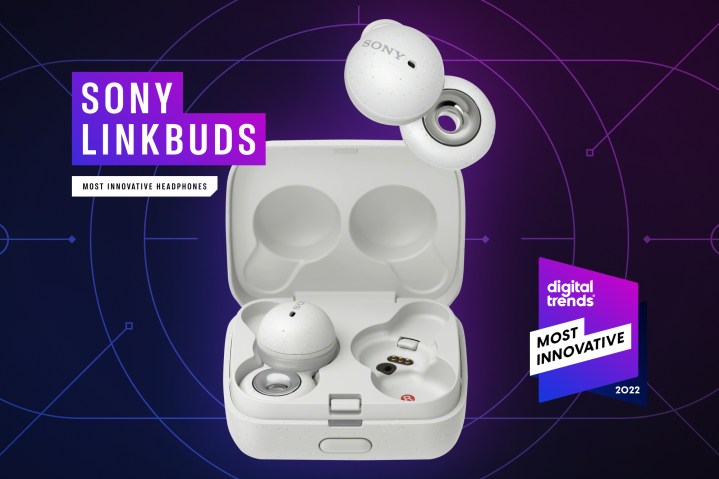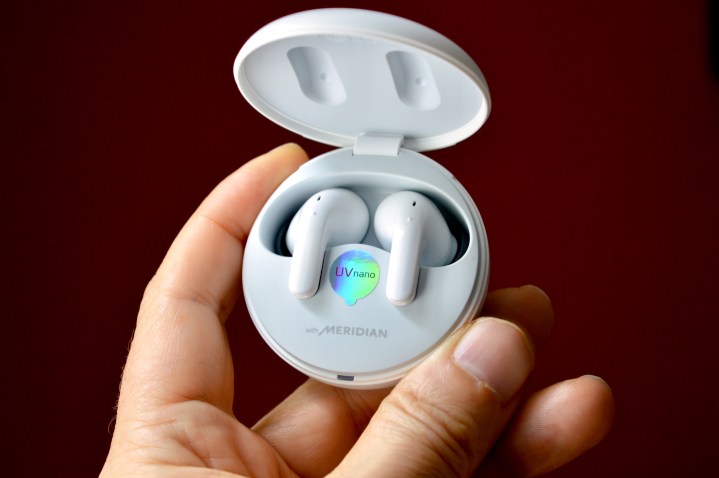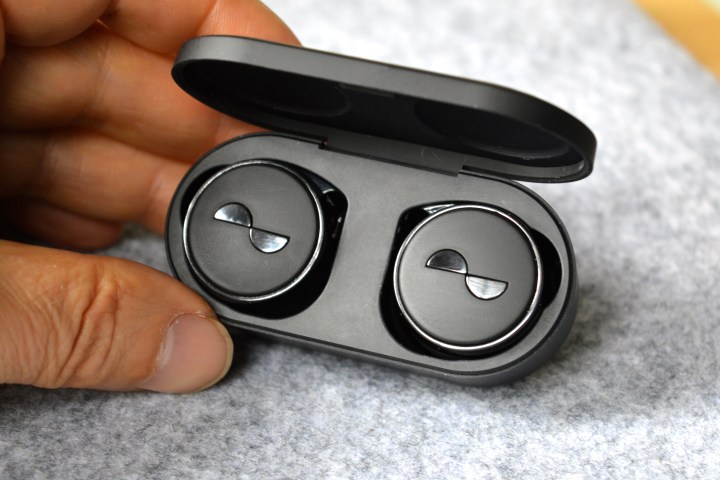We’ve been in something of a golden era for personal audio for more than two decades if you start counting with the launch of the first iPod. You might think that there’s simply no more room for new features or improvements, and yet if anything, the pace of progress — especially in headphones and earbuds — has only increased. In 2022, companies started to look at ways to overcome wireless audio’s traditional limitations, sometimes successfully, sometimes a little less so. But either way, we’re here to recognize the products that really stepped out on a limb.
Want to see the rest? Check out our full list of the most innovative tech products of 2022!
Winner: Sony LinkBuds

People love wireless earbuds and with good reason. They’re convenient and most sound so good these days, you hardly miss the wire at all. Tack on handy new features like noise cancellation, Bluetooth Multipoint, and access to your voice assistant, and it’s easy to see why these devices are everywhere.
But the problem with wireless earbuds is that they block out the outside world. And the better they sound, the more they usually block our ears. Transparency mode can help, but it’s only meant to be a temporary thing — best used for quick conversations. Sony thought it might be able to give us the best of both worlds: Earbuds that sound great while letting us hear the world around us, not just some of the time, but all the time. Its solution: the uniquely shaped LinkBuds.
By designing the LinkBuds with a donut-shaped audio driver, Sony managed to create surprisingly great sound that doesn’t block even the faintest of sounds from entering our ears. It also introduced Wide Area Tap, one of the coolest features we’ve ever seen on a set of earbuds, that turns the part of your cheek directly in front of the earbud into a touch control.
Unfortunately, Sony’s clever formula means you need to accept certain compromises. The LinkBuds, while small, don’t fit a lot of ear shapes. Fit always plays a role in earbud sound quality, but it matters a lot more on the LinkBuds. Battery life is well below what we’ve become accustomed to, and it turns out that listening to the outside world is something we don’t always want to do — and yet there’s no way to block it out.
Still, these issues notwithstanding, a ton of thought and engineering went into making the LinkBuds, and we appreciate the effort Sony made to solve a very real problem.
Runner up: LG Tone Free T90Q

Sometimes, innovation means offering people a suite of features they simply can’t find in any other product. By that measure, it’s hard to beat LG’s Tone Free T90Q. These earbuds look a lot like Apple’s AirPods Pro, and they offer Dolby Atmos head-tracking spatial audio — just like Apple’s buds — but they go much further. The charging case has a built-in UV light system to sterilize the earbuds, the companion app has a dizzying number of control and EQ customization options, and you can use Bluetooth Multipoint to connect to two devices at once.
But the really impressive thing that the T90Q do is let you connect to both digital and analog wired sources of audio, while still maintaining the quality of their aptX Adaptive codec, for 24-bit, hi-res sound. It’s all done via the charging case and two USB-C cables — perfect for when you’re in an airplane, or when your computer or phone can’t speak aptX Adaptive.
Honorable mention: Nura True Pro

Being first isn’t always easy. The Nura True Pro are the first earbuds to support Qualcomm’s aptX Lossless codec, which is itself the first lossless Bluetooth codec on the market. In theory, that means these earbuds can deliver perfect, bit-for-bit CD sound from a lossless source like a FLAC file or any of the lossless streaming options from Apple Music, et al.
But in order for aptX Lossless to work, it has to be supported on both the earbuds and the smartphone. For most of 2022, finding a compatible smartphone was very difficult. The Nura True Pro will be awesome when these phones become more commonplace in 2023, but by then, they’ll likely have lost that first-mover advantage. Still, Nura knew that was a possibility and decided to push ahead anyway, hoping its commitment to innovation would pay off eventually. Gotta respect that.
Editors' Recommendations
- Report: Sonos Ace headphones will get wired and wireless lossless audio
- Beats headphones showdown: Solo 4 vs. Studio Pro
- Marshall’s latest headphones get 100 hours of battery life and wireless charging
- Spatial audio via headphones: how science crams 9 speakers and a subwoofer inside your head
- Sony WH-1000XM6: the design and features we want Sony’s next headphones to deliver



